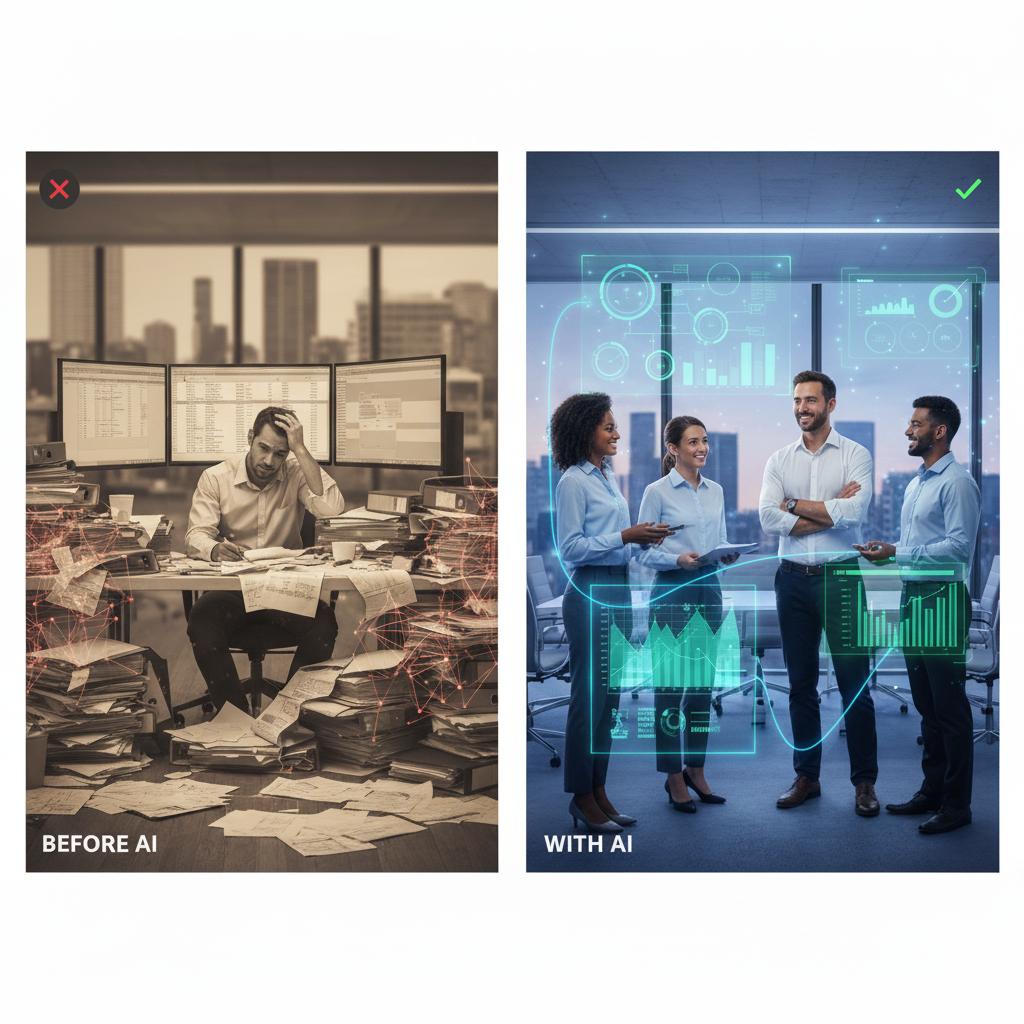Students Already Use AI. Now Make It Visible.
How transparency raises standards, reduces disputes, and prepares students for professional work.
4 min read
 Christina Marchetti
:
Sep 19, 2025 1:08:38 PM
Christina Marchetti
:
Sep 19, 2025 1:08:38 PM

The U.S. Chamber of Commerce’s 2025 small business survey found that 58% of small businesses now use generative AI, a significant jump from 40% in 2024. This rapid adoption shows that AI is no longer a niche technology; it’s becoming a mainstream tool across American businesses.
Yet, despite this fast adoption, many organizations are not seeing a return on their investment. A 2024 RAND Corporation study, based on interviews with 65 experienced data scientists and engineers, found that more than 80% of AI projects fail, a rate twice as high as traditional IT projects. This gap reveals a core problem: while organizations are quick to adopt AI tools, they struggle to translate that adoption into meaningful business value.
To understand this disconnect, we need to clarify two different concepts that often get confused.
Adoption means getting an AI tool up and running. Your team learns to use a new software platform, someone gets trained on the interface, and pre-identified outputs and outcomes are expected. This is what most organizations focus on initially because it feels like a simple, quantifiable achievement.
Adaptation means weaving AI capabilities into how your organization actually operates. This requires changing workflows, retraining people, establishing new quality standards, and building feedback systems that evolve both humans and AI improve continuously over time. While this is much harder, it derives more impactful results.
Consider a real example: A marketing team starts using an AI tool to write email campaigns. Adoption means they learn the software and begin generating content. Adaptation means they redesign their entire content creation process. They train team members to become better collaborators with AI, establish new quality review procedures, and create systems to measure which human-AI combinations produce the best customer engagement. The difference is like buying a sophisticated tool versus learning to use it masterfully. Simply owning the tool does not make you a productive craftsperson.
The RAND study identified five primary reasons why AI projects fail, based on extensive interviews with industry practitioners. Understanding these obstacles helps explain why adoption doesn’t automatically lead to success:
Organizations that successfully move beyond simple adoption often discover that thoughtful AI adaptation creates benefits that extend far beyond initial efficiency gains:
Research into successful AI implementations reveals several approaches that work across different types of organizations:
The current moment presents both opportunity and risk for business leaders. AI capabilities will continue advancing rapidly and becoming more accessible, but the fundamental challenge of organizational adaptation remains largely unchanged. The question for leaders is whether their organizations are building the capabilities required to harness these powerful tools effectively. While 96% of small business owners are planning to adopt emerging technologies, true competitive advantage will belong to the organizations that master the harder work of adaptation.
At RightSeat, we specialize in helping leaders with that essential work. We partner with you to ensure you have the right people in the right seat, a strategy to adapt AI to your unique environment, and the trust necessary to drive innovation.
👉 Ready to move from AI adoption to meaningful adaptation? [Contact RightSeat]
Add your email below and we'll send you newsletters and blog updates from the RightSeat AI TrustLab

How transparency raises standards, reduces disputes, and prepares students for professional work.

Part 2: AI for Strategic Planning

AI for Strategic Planning, Part 1